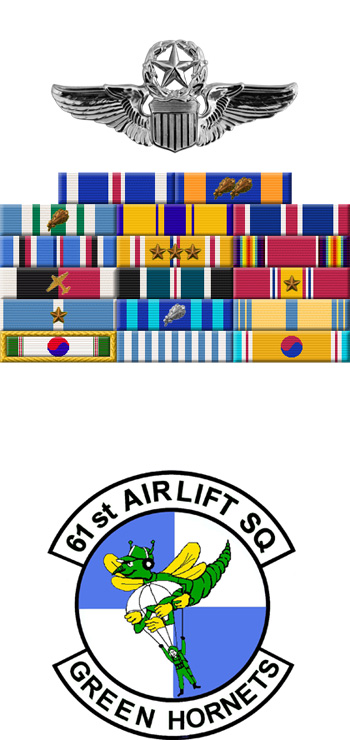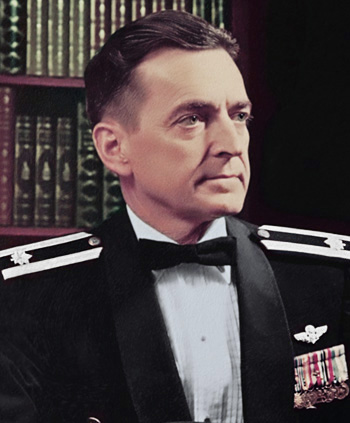
|
James E. Romero, Jr. |
 |
|||
| Rank, Service | ||||
Lieutenant Colonel O-5, U.S. Air Force |
||||
| Veteran of: | ||||
|
||||
| Tribute: | ||||
Jim Romero was born on January 29, 1919, in Havana, Cuba, to American parents. He enlisted in the Aviation Cadet Program of the U.S. Army Air Forces on April 16, 1942, and was commissioned a 2d Lt and awarded his pilot wings at Columbus Army Airfield in July 1943. After completing B-17 Flying Fortress transition training, he served as a B-17 instructor pilot from October 1943 to December 1944. Lt Romero then completed B-29 Superfortress transition training, and was assigned to the 483rd Bomb Squadron of the 505th Bomb Group on North Tinian Island in the Pacific in May 1945. He flew 27 combat missions before the war ended, and left active duty in 1946, being recalled to active duty in 1948. His next assignment was with the 331st Troop Carrier Squadron at Rhein Main AB, Germany, where he served from March 1948 to September 1949, during which time he participated in the Berlin Airlift. Lt Romero next completed Air Force Electronics School at Keesler AFB, Mississippi, and then served as a Detachment Commander with the 355th Aircraft Control and Warning (AC&W) Squadron at Fargo, North Dakota, from June 1950 to June 1952. Capt Romero served as a Communications/Electronics Officer with the 751st AC&W Squadron with the 27th Air Division from June 1952 to January 1953, followed by service as a C-119 Flying Boxcar pilot with the 61st Troop Carrier Squadron at Ashiya AB, Japan, from January 1953 to April 1954, during which time he participated in missions during both the Korean War and the First Indochina War in Vietnam. His next assignment was as Commander of the 483rd Communications Squadron at Ashiya from April 1954 to October 1955, and then as Officer in Charge of the Base Communications Center at Forbes AFB, Kansas, from October 1955 to November 1957. After completing Communications/Electronics Staff Officer training at Keesler AFB, he served with the 27th Air Division at Norton AFB, California, from August 1958 to July 1959. He next served as a Communications/Electronics Officer witht he 920th AC&W Squadron at Goose AB, Labrador, from July 1959 to June 1960. Maj Romero served with Headquarters Air Defense Command at Ent AFB, Colorado, from June 1960 to August 1962, and then served as an Electronic Warfare Officer with Headquarters NORAD from August 1962 to October 1964. After attending the Military Assistance Institute in Washington, D.C., Col Romero served as a Senior Advisor on Telecommunications and Electronics with the Indian Air Force in New Delhi, India, from May 1965 to May 1967, followed by service on the staff of Headquarters U.S. Air Force in the Pentagon from June 1967 until his retirement from the Air Force on February 1, 1969. After his retirement from the Air Force, Jim worked for GTE Lenkurt Company from 1969 until his retirement in 1984. |
||||
|
||||

